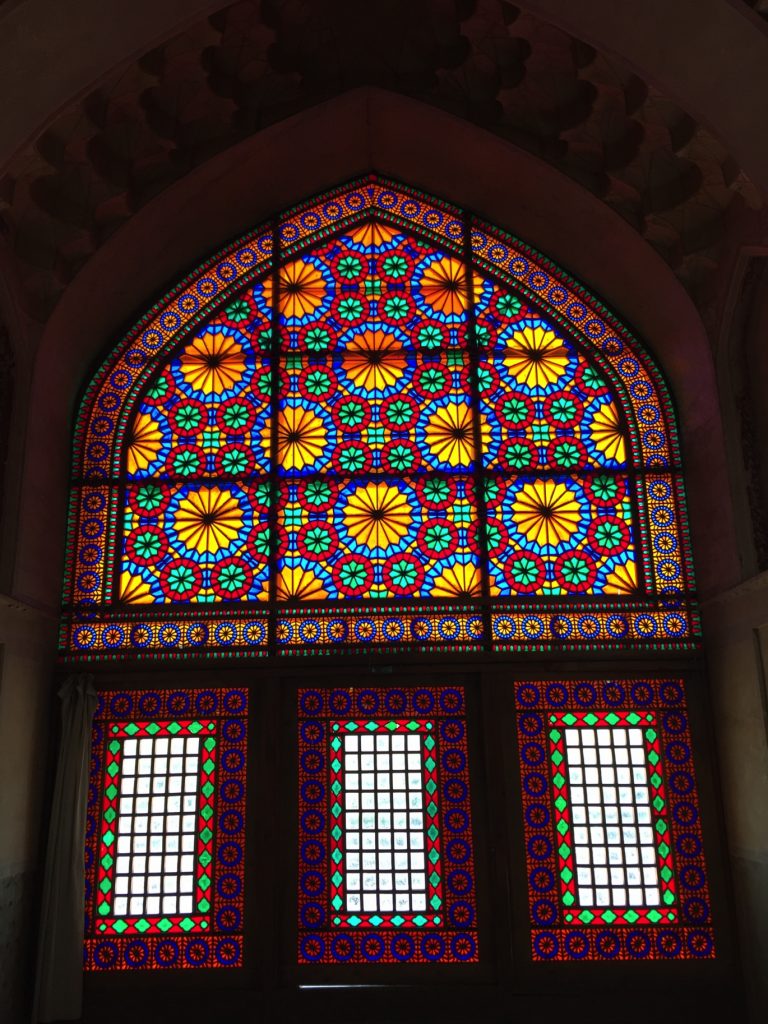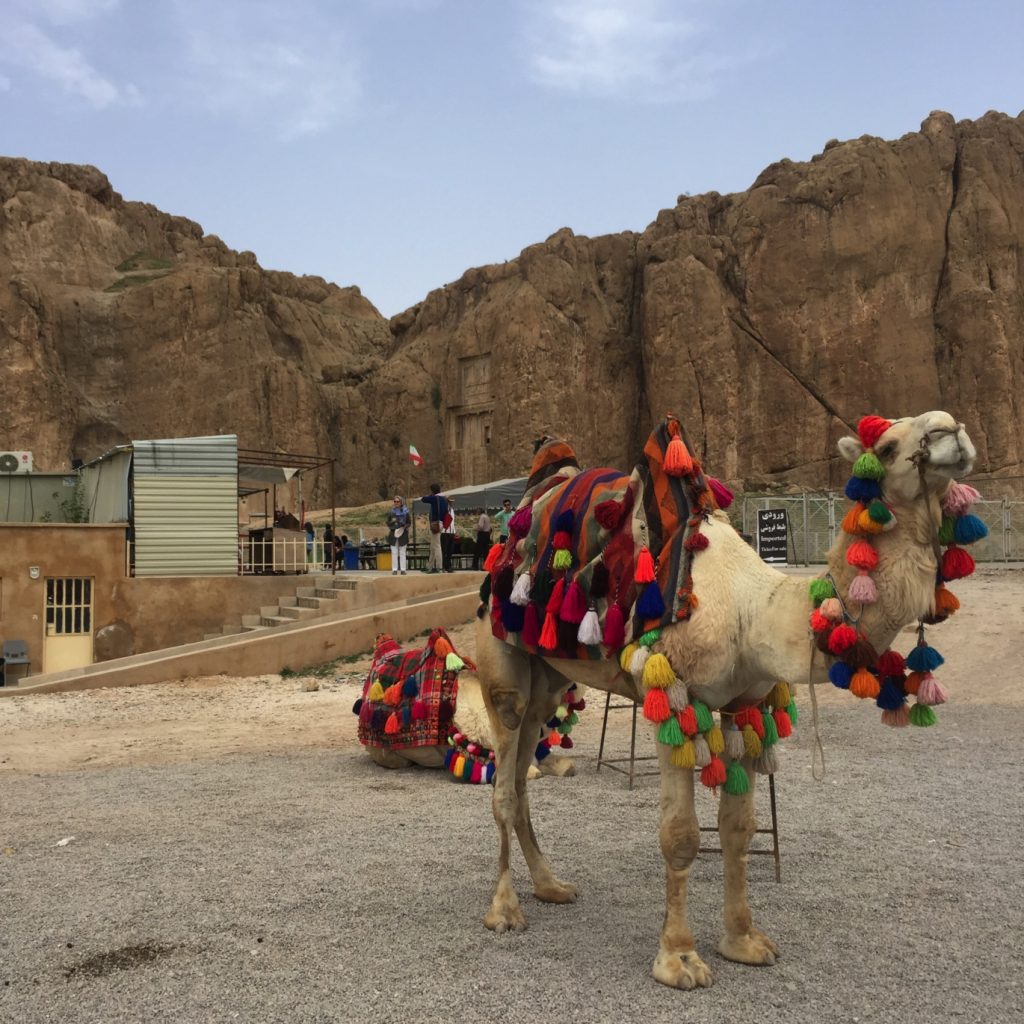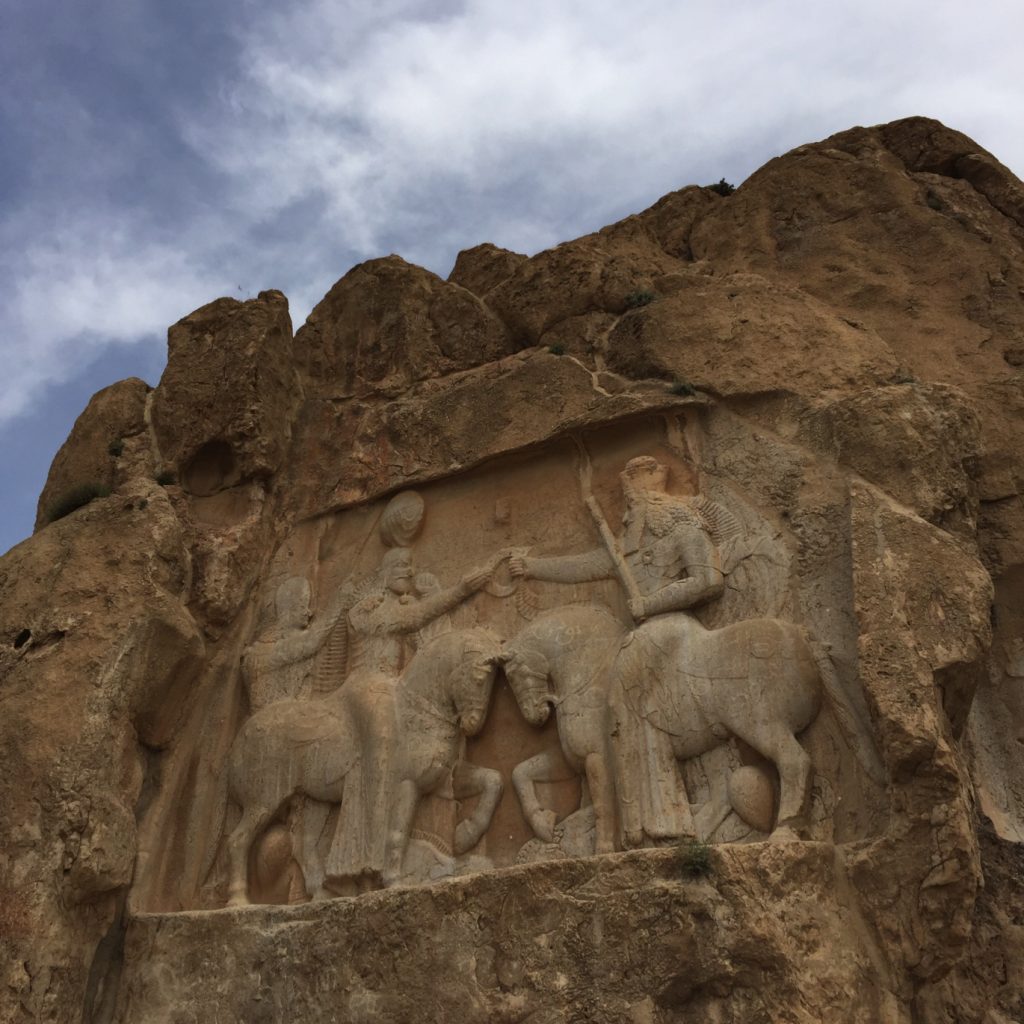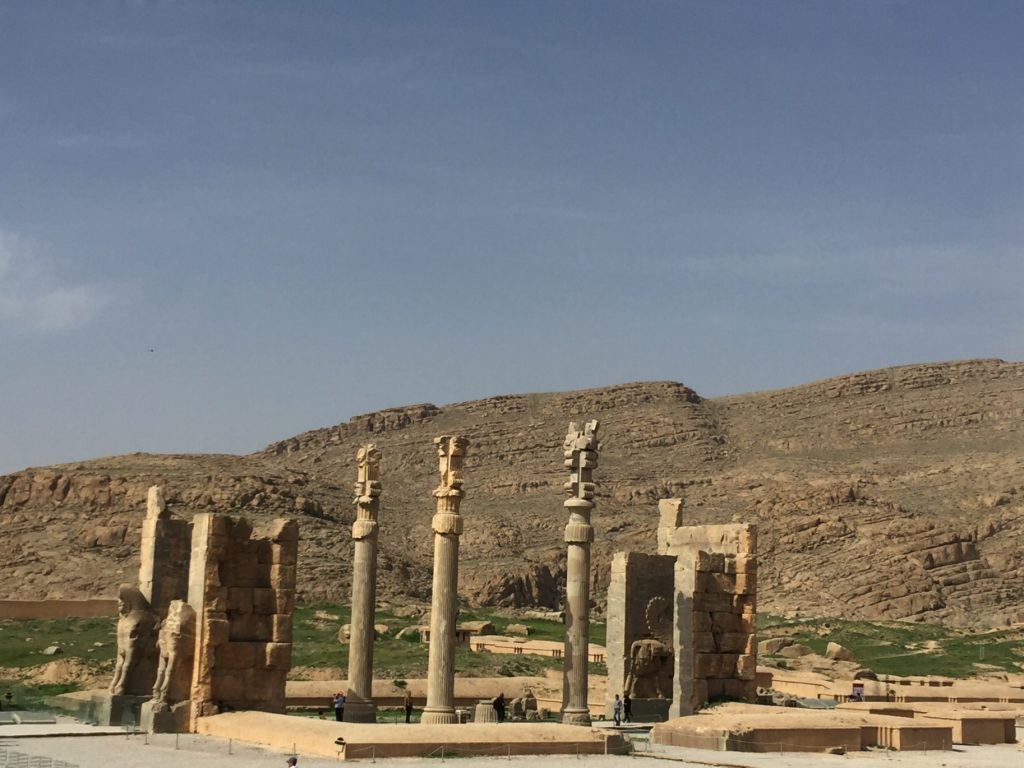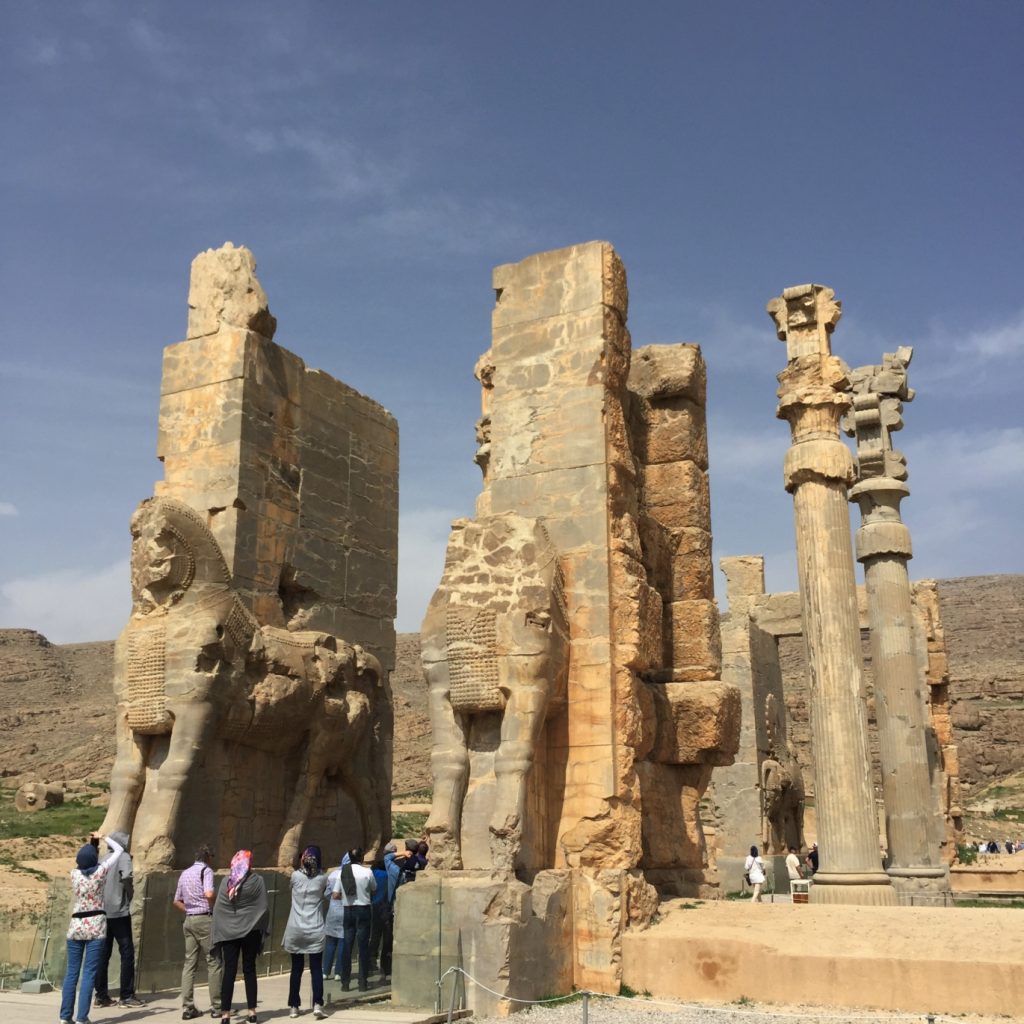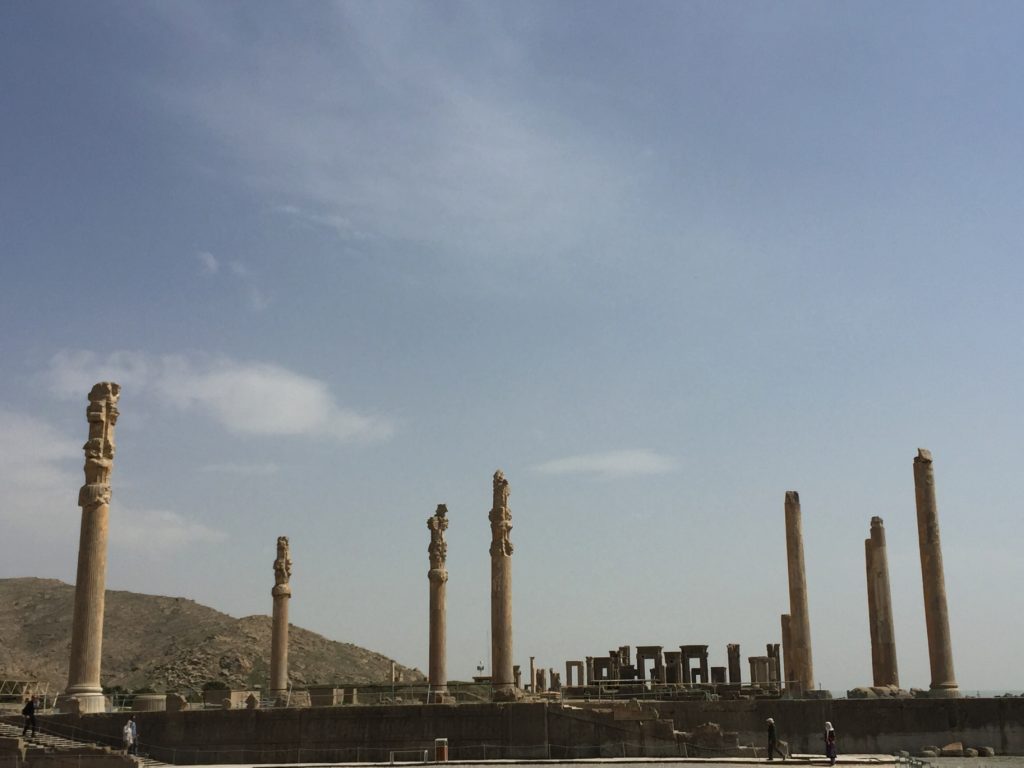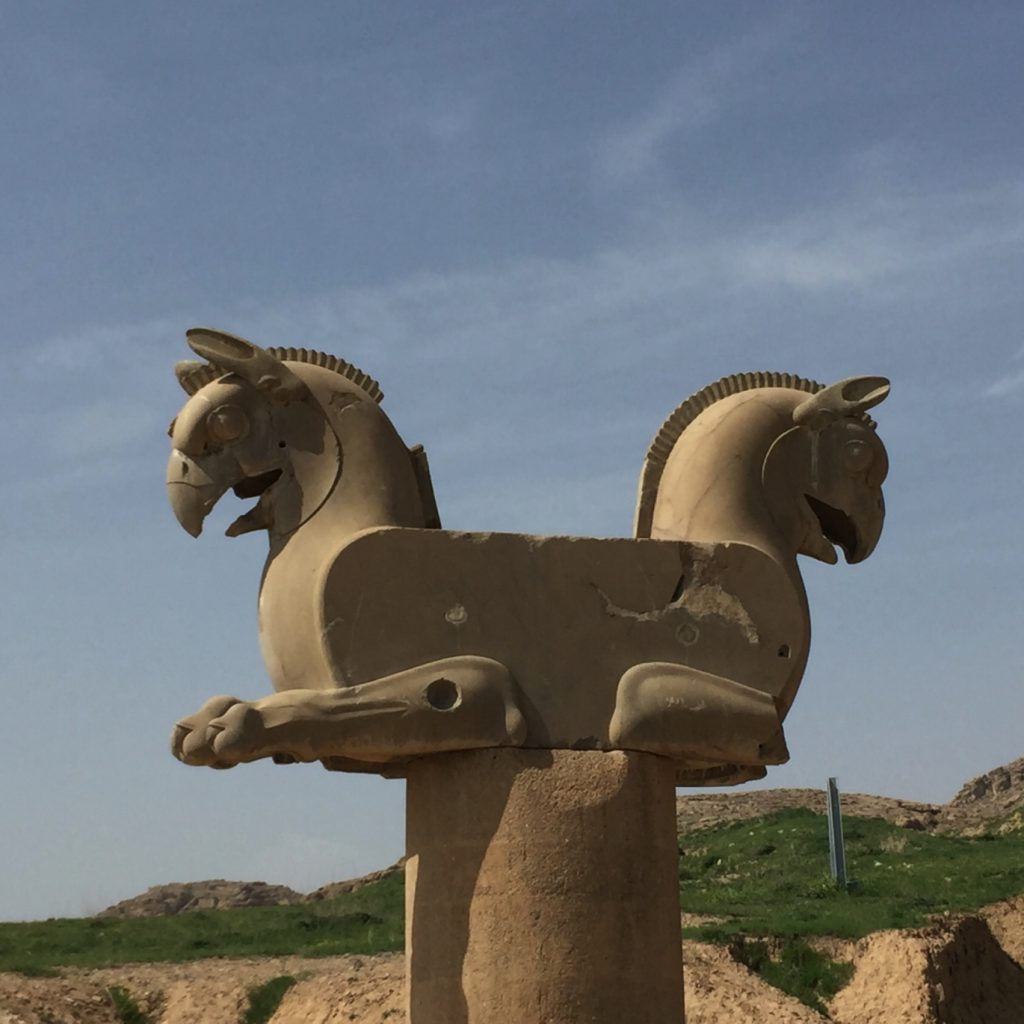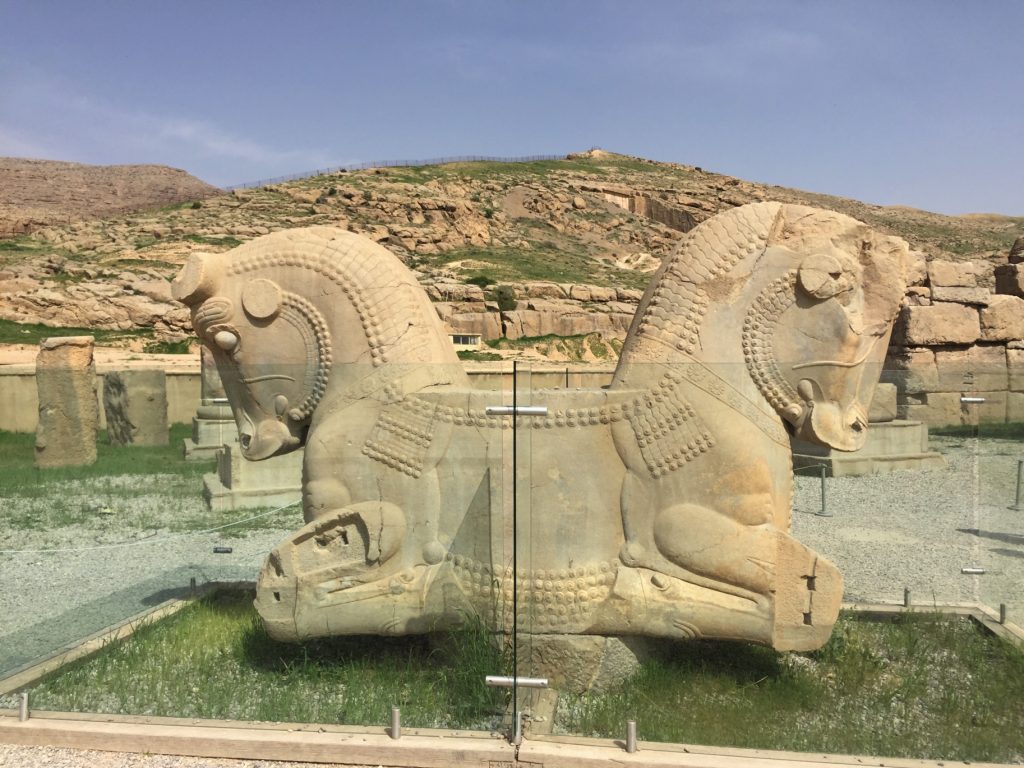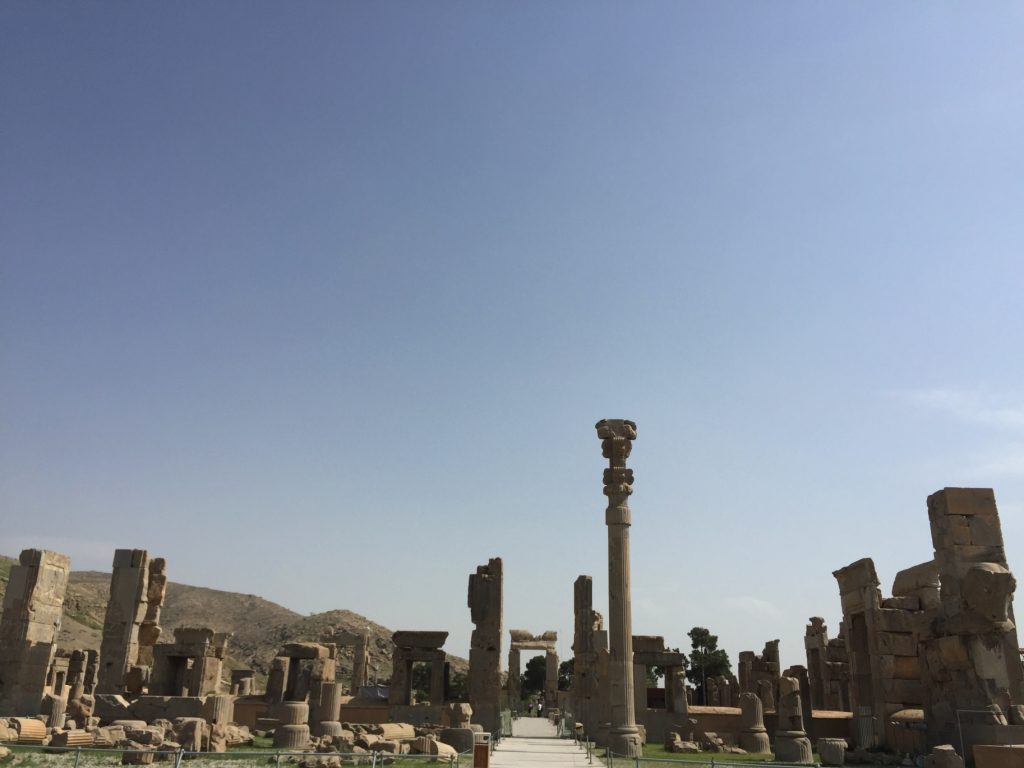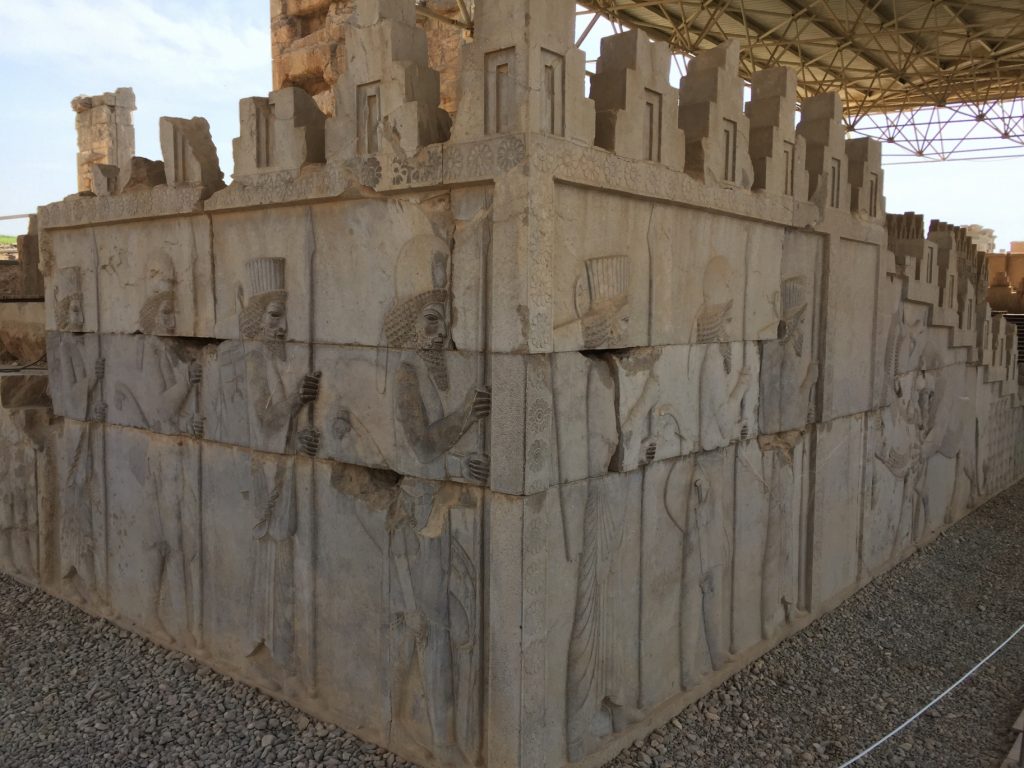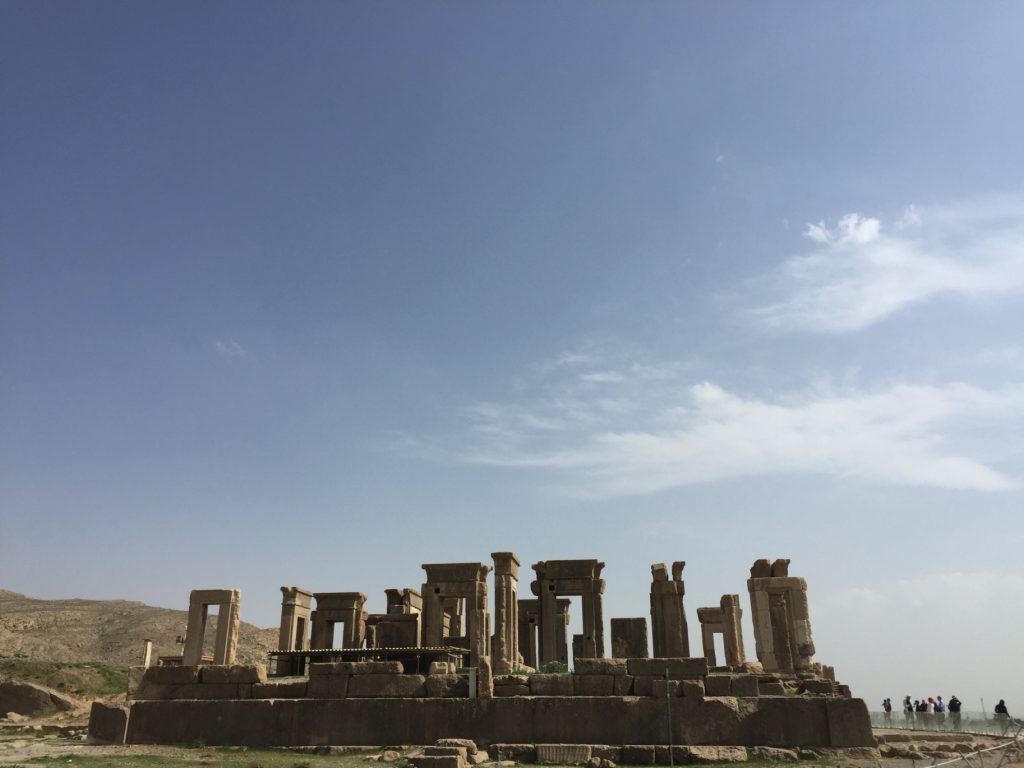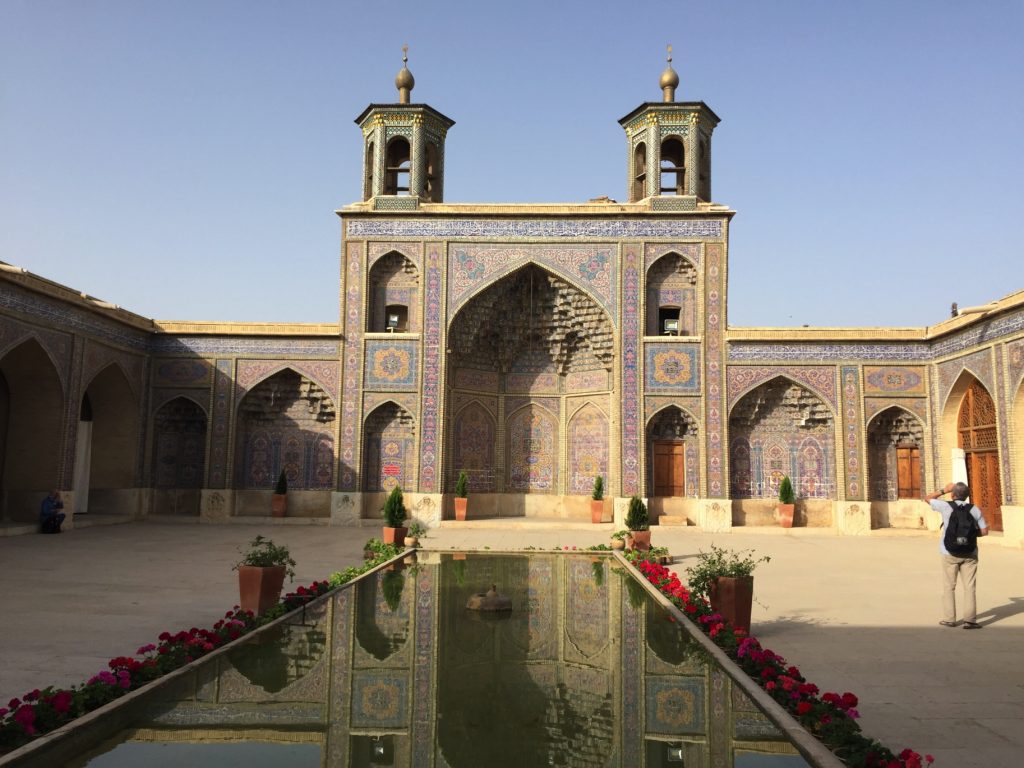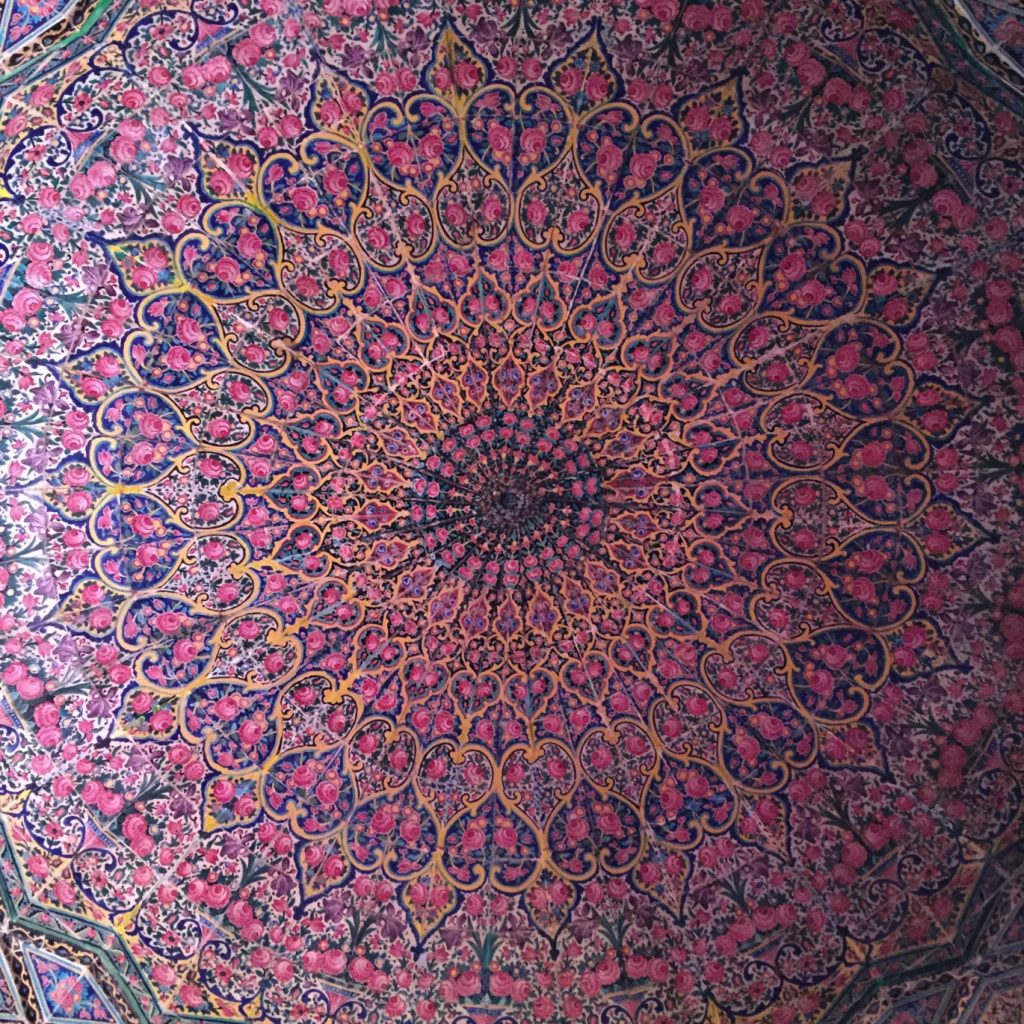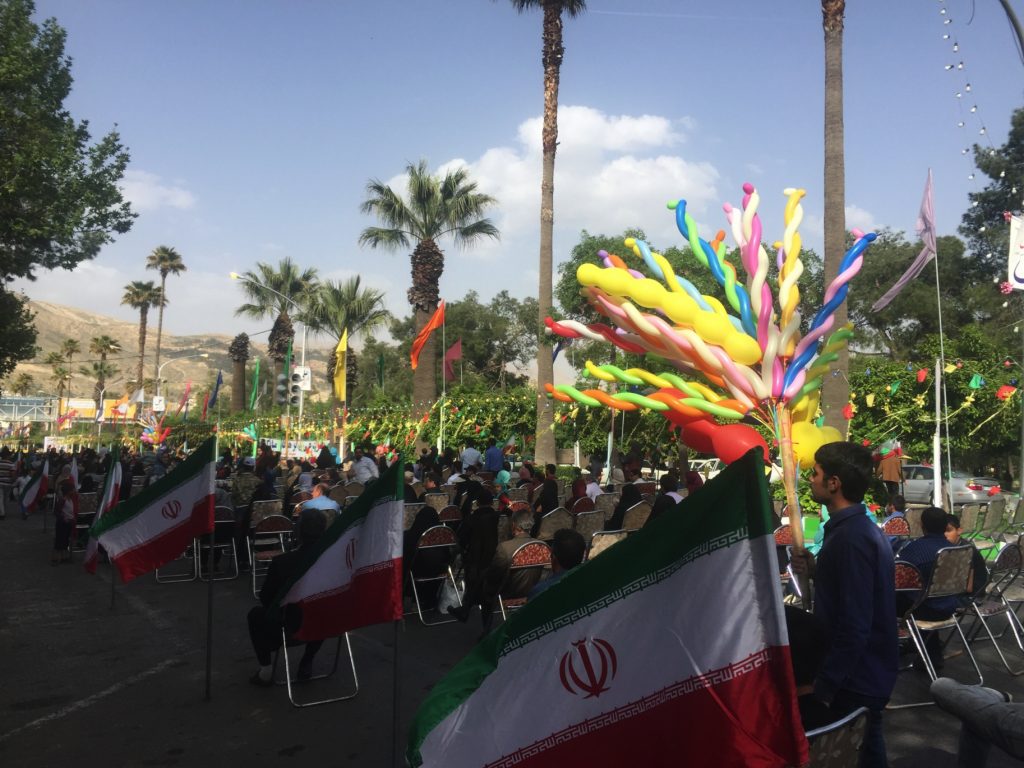Now both bus and train systems in Iran are quite comfortable and reliable, so it was easy to decide on taking the night bus to Shiraz and save some time. The very reasonably priced ticket also included wifi, a meal and free water. Which is something I really liked about Iran in general. Instead of making money selling bottled water in a country that gets quite hot for half of the year (perfect business case right?), they’ve decided to have free water coolers all around most of the cities.
Besides the famous wine, which is made from the grapes that were originally grown here, Shiraz is known as the city of poets and it’s not difficult to see why. The city is beautifully decorated with flowers and gardens, with the smell of Jasmine almost always in the air. Even in the hostel, where a Jasmine tree shed its shade on the hostel’s courtyard or in the Bazars, where bird cages filled with singing nightingales set the soundtrack. And it’s this beautiful romantic atmosphere that is believed to have influenced some of Iran’s most famous poets like Hafiz and Saadi, who were both born in Shiraz. Of course the Shiraz’s are very proud of their cultural icons and have build impressive mausoleums to celebrate them both. At the Hafiz mausoleum, it’s a tradition to go, ask a question and open a book of Hafiz’s poems at any random page to find his answer to your question.
Another thing Shirazis are also proud of, is the fact that Shiraz has always been self sufficient. It was never a desert like Yazd or Isfahan used to be, so it had water and agriculture (famous for oranges) and was therefore always quite a rich city. Which also leads to their reputation as being the lazy Iranians. While the Isfahanis are supposed to be clever with money and quite stingy, the Shirazis are so lazy, that they put a chair next to the bed, to have some rest after waking up. But this might also be to recover from the night before, as the people here are actually quite lively at night, probably as a means of escaping the heat of the day. And so the streets are full of locals shopping, listening to music, eating some frozen noodle ice cream or chatting up tourists. Especially the guys here in Iran would try to strike conversations with any tourists in general to either ask for foreign cigarettes or practice their english. And if it goes well, invite them to a meal at their home with their family, then exchange contacts in the hope for a return invitation to come to Europe for example.
Shiraz was also the first and only place in Iran that I and others at the hostel encountered being tricked to pay more money than we should. I guess this really correlates with how much interaction they have with tourists as they do tend to get a lot of tourists here. Most tourists come for the ruins of Persepolis and to see some more (you guessed it!) mosques. Perhaps the most popular one being the pink mosque, known for it’s beautiful stained glass windows and pinkish ceiling decorations. Now Persepolis is a day trip out of Shiraz, which takes you to two other sites Pasgarde to see Cyrus the Greats tomb and Necropolis to see some more tombs inside the mountains before actually arriving at the ancient city of Persepolis. And while definitely impressive to see how precise and well preserved some of the statues and wall drawings are, I was expecting a much larger site to be honest. Of course it also depends on how interested you are to appreciate and find out about every detail in the site. A history buff at the hostel for example spent the whole day there and it wasn’t nearly enough for her. So it’s really about how engaged you are with the history, but for me to see it all, get a general idea and feel the energy of the place, it took about 2-3 hours, not to mention that after a while the sun and the heat definitely hit you hard. Almost as hard as the next stop on the trip; The Desert.

I found this cartoon in a magazine on the way to Persepolis and it made me smile the whole trip, so I had to share it. It combines 3 characteristics or traits that you can’t miss about the Iranians: 1- They love to picnic and will do so anywhere!! 2- They can be very quick tempered. 3- They can also make fun of themselves.

First stop on the way to Persepolis was Pasgarde. Less impressive but still kind of cool in a low-key kind of way.

This is the same holy figure found in Zoroastrianism, so as you can see, it’s quite an old religion.

The best time to visit is apparently in the winter, as the sun shines more perpendicularly through the windows.

This is a spice mix, carefully and colorfully proportioned. One scoop of this from top to bottom and you’re ready to start cooking.


